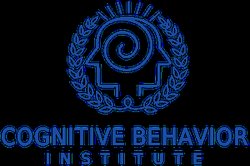Pediatric Obsessive-Compulsive Disorder
By Braelyn Tracy, MSEd (pre-doctoral fellow) 02/02/2022
What is OCD?
There is a wide spectrum of severity and disability associated with childhood OCD, including those who are completely unable to function appropriately and are experiencing a profound degree of suffering with anxiety and frustration. Although defined by the presence of obsessions and compulsions, OCD is classified as an anxiety disorder.
Obsessions are intrusive and unwanted recurring thoughts, images, or urges that occur over and over again and feel outside of the child’s control. These obsessions are associated commonly with feelings of anxiety or other disturbing emotional experiences such as guilt, worry, or dread related to expectations of catastrophic, disgraceful, or tragic outcomes.
Compulsions (also referred to as rituals) are behaviors the child feels he or she “must do” with the intention of getting rid of the upsetting feelings caused by the obsessions. A child may also believe that engaging in these compulsions will somehow prevent bad things from happening. Compulsions usually are linked to obsessions in that the individual considers them necessary to neutralize the obsessive thoughts and to prevent a feared outcome.
Characteristics of OCD in children
A child with OCD has obsessive thoughts that are not wanted. They are linked to fears, such as touching dirty objects. He or she uses compulsive rituals to control the fears, such as excessive handwashing.
As children grow, rituals and obsessive thoughts normally happen with a purpose and focus based on age. Preschool children often have rituals and routines around meals, bathing, and bedtime. These help stabilize their expectations and view of their world. School-aged children often create group rituals as they learn to play games, take part in team sports, and recite rhymes. Older children and teens start to collect objects and have hobbies. These rituals help children to socialize and learn to deal with anxiety.
Identifying OCD in Children
The common signs and symptoms of OCD in children can be categorized by obsessions and compulsions:
Obsessions | Compulsions |
|
|
When a child has OCD, obsessive thoughts and compulsive rituals can become very frequent and strong. They may interfere with daily living and normal development.
An OCD diagnosis is warranted when these obsessions and compulsions become so time-consuming that they impair day-to-day functioning (e.g., social, school, self care, etc.). Typically, these symptoms have a gradual onset, developing over the course of several weeks or months.
What is the best form of treatment for OCD?
- The most rigorously studied and efficacious treatment to date for childhood OCD is CBT, notably CBT protocols applying the principle of exposure and response prevention (EXRP).
- This therapy involves gradually being exposed to situations that trigger the childs obsessions and compulsions.
- The treatment helps to break the automatic bond between feelings of anxiety and ritual behaviors, and also train an individual not to ritualize when he/she is anxious.
- Psychiatric Medication
- Selective serotonin reuptake inhibitors (SSRIs). These medicines help raise serotonin levels in the brain. The efficacy of these medications, including sertraline, fluoxetine, fluvoxamine, paroxetine, and clomipramine, is statistically significant and consistently demonstrated.
Let us help!
At Cognitive Behavior Institute, not only is our staff trained in EX-RP, but several CBI clinicians are currently pursuing certification in this method of treatment. For more information regarding treatment services for OCD offered through Cognitive Behavior Institute, please visit our page: Center for OCD
To schedule an appointment, please contact us at: (724) 609-5002 and one of our knowledgeable staff can assist you. We can also be reached via email at staff@cbipsychotherapy.org.

